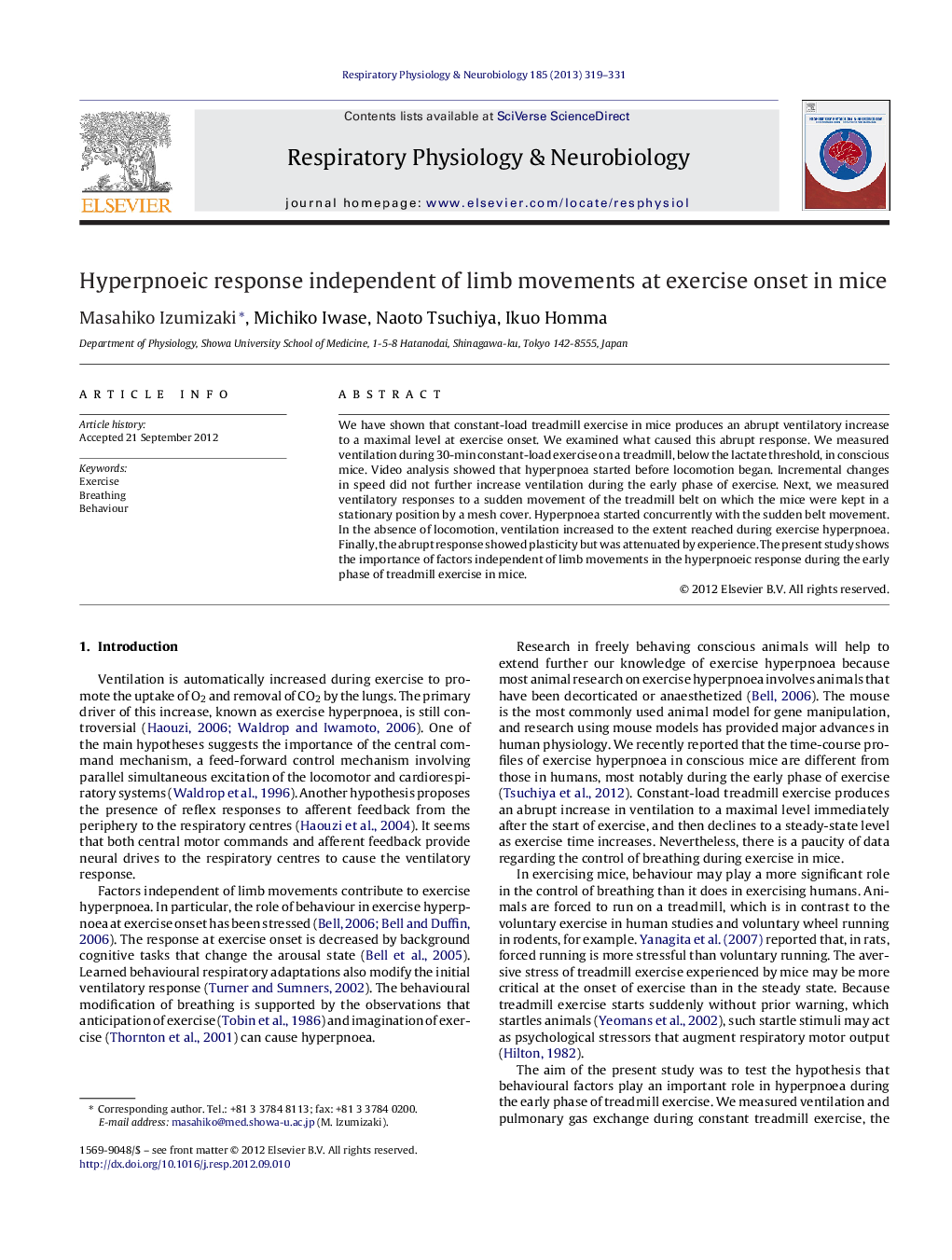| Article ID | Journal | Published Year | Pages | File Type |
|---|---|---|---|---|
| 2847286 | Respiratory Physiology & Neurobiology | 2013 | 13 Pages |
We have shown that constant-load treadmill exercise in mice produces an abrupt ventilatory increase to a maximal level at exercise onset. We examined what caused this abrupt response. We measured ventilation during 30-min constant-load exercise on a treadmill, below the lactate threshold, in conscious mice. Video analysis showed that hyperpnoea started before locomotion began. Incremental changes in speed did not further increase ventilation during the early phase of exercise. Next, we measured ventilatory responses to a sudden movement of the treadmill belt on which the mice were kept in a stationary position by a mesh cover. Hyperpnoea started concurrently with the sudden belt movement. In the absence of locomotion, ventilation increased to the extent reached during exercise hyperpnoea. Finally, the abrupt response showed plasticity but was attenuated by experience. The present study shows the importance of factors independent of limb movements in the hyperpnoeic response during the early phase of treadmill exercise in mice.
Graphical abstractFigure optionsDownload full-size imageDownload as PowerPoint slideHighlights► We measured ventilation during constant-load exercise on a treadmill in mice. ► Exercise hyperpnoea started before locomotion actually began. ► Ventilation peaked during the early phase of exercise and then decreased. ► Ventilatory increase at exercise onset occurred independently of limb movements. ► Hyperpnoea at exercise onset showed plasticity but was attenuated by experience.
